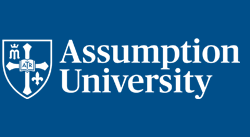Document Type
Article
Publication Date
2021
Published In
Journal of Solution Chemistry
Keywords
Solvation, Solvent Effects, Spectroscopy, UV-Vis, Iodine-Starch
Abstract
The iodine clock reaction and the resulting blue colored iodine–starch complex have been observed and studied for over a hundred years, but the structure of the product and mechanism by which it is formed are still not completely understood. The work presented here employs 3D-printed millifluidic devices as a reaction vessel that allows for spectral acquisition on a flowing iodine clock reaction in different aqueous alcohol solvents. UV–Vis absorption spectroscopy is used to probe the flow dynamics and study effects of the solvation environment on the iodine clock reaction under various solvent conditions. Bathochromic shifts of the product absorbances are observed when the solvent composition is changed from water to aqueous solutions of increasing amounts of methanol, ethanol, and 1-propanol. It is determined that the solvation network around the product complex helps to control the geometric and electronic structure of the complex and is easily perturbed by the addition of alcohol to the solution. The shifts are primarily attributed to a weakening of the solvation network around the complex rather than a decreasing polarity of the solvent and are due to interactions of the solvent with the starch portion of the complex. Finally, analysis of the laminar flow dynamics suggest that the complex may exist where solvent molecules have similar velocities and thus are able to form a stable solvation network and that triiodide may form slightly prior to the complex. The insights gained from these observations can help guide modeling of the iodine–starch complex and provide benchmarks for the expected effects of different solvents on the electronic structure of the product complex.
Grant Information
This work was supported by the Provost’s office at Assumption University. The authors wish to thank the Assumption University Biological and Physical Sciences department for their support of this work and the opportunity for undergraduate student research experiences.
DOI
10.1007/s10953-021-01091-6
Rights
© 2021, The Author(s), under exclusive license to Springer Science Business Media, LLC, part of Springer Nature
Recommended Citation
Morley, S. E.; and Knurr, B. J. (2021). Probing the Role of the Solvation Shell for the Iodine-Starch Complex Using Millifluidic Devices. Journal of Solution Chemistry 50: 833-850. https://doi.org/10.1007/s10953-021-01091-6


Comments
This is a post-peer-review, pre-copyedit version of an article published in the Journal of Solution Chemistry. The final authenticated version is available online at: https://doi.org/10.1007/s10953-021-01091-6.